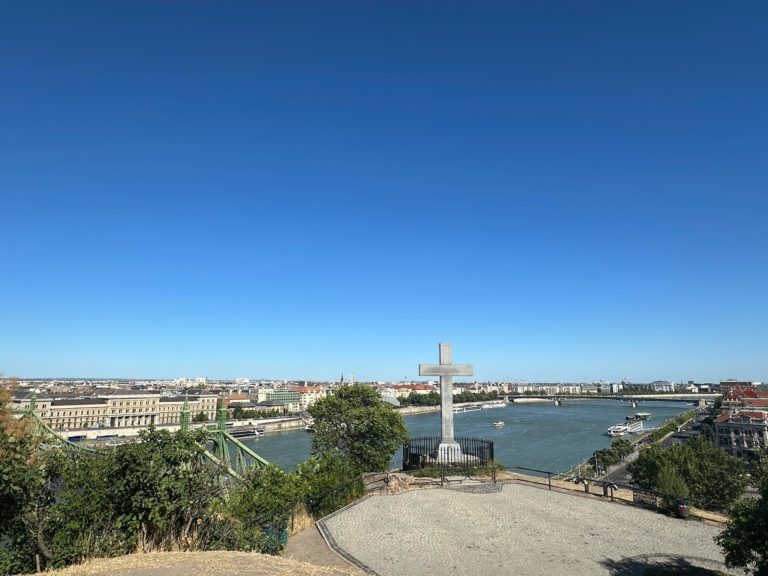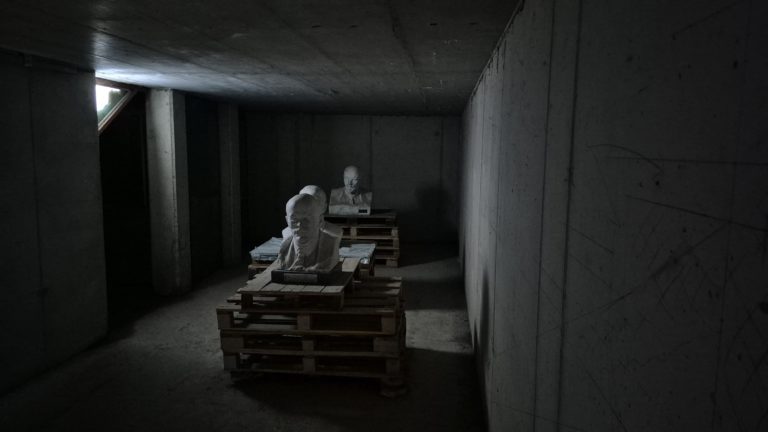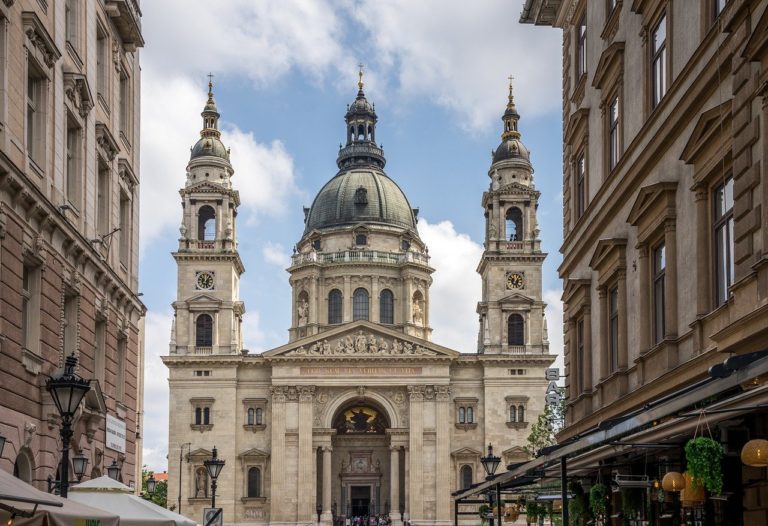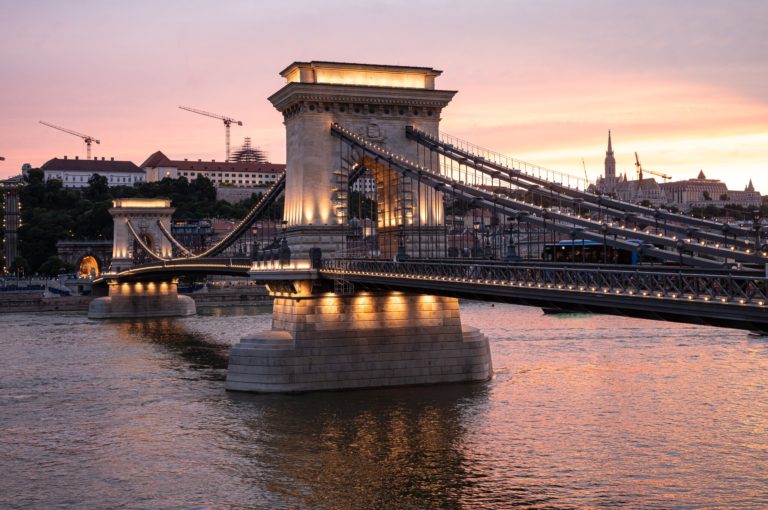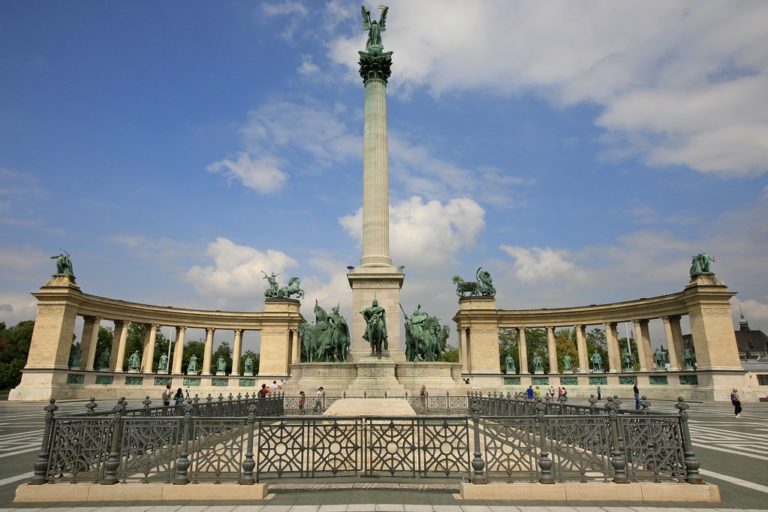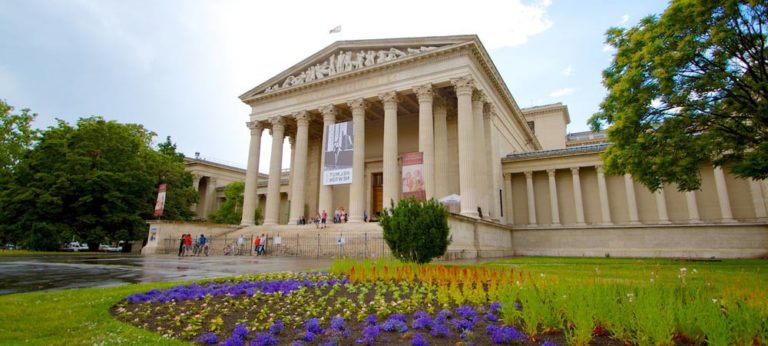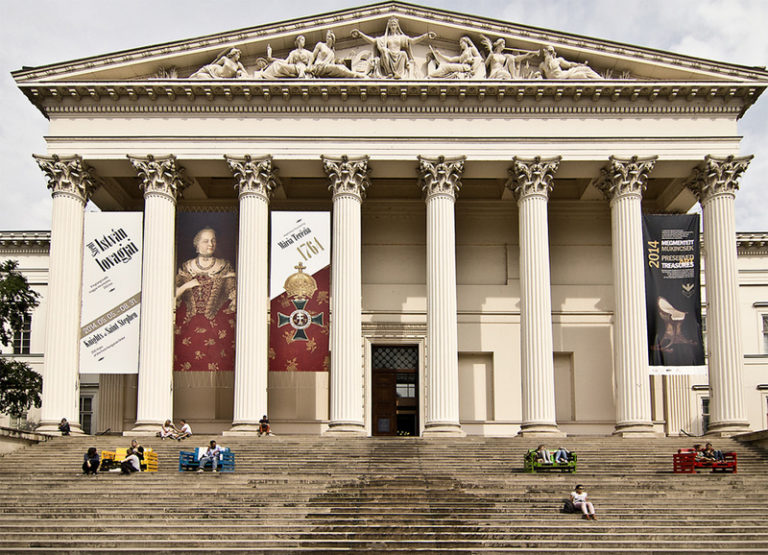Among Budapest’s most enchanting and lesser-known spots, the Rock Church of Gellért Hill (Sziklatemplom) stands out as a perfect blend of spirituality, nature, and history. Nestled within Gellért Hill on the Buda side, right next to the famous Gellért Baths, this church is much more than a tourist attraction: it invites visitors into a space of silence, reflection, and discovery. A Sanctuary Carved into Stone The Rock Church was founded in the turbulent 1920s, during a time of great social and political change in Hungary, following the collapse of the Austro-Hungarian Empire. It was the Pauline Order—Hungary’s only native monastic order—that envisioned this sanctuary, inspired by the meditative spirit of the Sanctuary of Lourdes in France. The monks discovered a natural cave inside Gellért Hill, near the city’s thermal springs, and gradually transformed it into a sacred space. From the very beginning, the church became not only a spiritual refuge…
Located in central Budapest, Liberty Square is far more than a public plaza, it is a layered landscape of monuments and historic buildings that reflect Hungary’s turbulent past and evolving identity. From politically charged memorials to striking architectural landmarks, the square offers a compelling narrative in stone and bronze. This article explores the statues and structures that define Liberty Square, revealing the stories they tell about war, power, memory, and national transformation. Ronald Reagan Statue Honoring a Cold War Architect In June 2011, a seven-foot bronze statue of Ronald Reagan was unveiled in Budapest’s Liberty Square, commemorating the 100th anniversary of his birth. Though Reagan never visited Hungary, his leadership during the Cold War is credited with aiding the country’s liberation from Soviet influence. Hungarian Prime Minister Viktor Orbán emphasized Reagan’s role in “creating a new world for Central Europe” by supporting the dismantling of communist regimes. Symbolic Placement and…
Memento Park, located on the outskirts of Budapest, is a space dedicated to preserving statues and symbols of Hungary’s communist period. Far from being a traditional park, this place offers a direct look at the country’s recent past, through monuments that once occupied public spaces during the socialist regime. Visiting it is a unique experience: a tour among sculptures of leaders, soldiers and workers that, beyond their artistic value, represent a key period in Hungarian history. The first impact As soon as you arrive at the park, you don’t find an ostentatious entrance like that of the Museum of Fine Arts or the Hungarian National Museum, but a brick wall that already conveys a sense of serenity. Right at the entrance, as if waiting for us, are the statues of Karl Marx and Lenin.The three gates through which you enter the park already allow you to see some of the…
Nestled in the heart of Budapest, where grand boulevards meet the shimmering Danube, stands St. Stephen’s Basilica, a monumental testament to Hungary’s spiritual heritage and architectural splendour. As the largest church in the capital, this neoclassical masterpiece not only dominates the city’s skyline with its soaring 96-metre dome but also holds profound cultural and religious significance. Named in honour of Stephen, Hungary’s first king and patron saint, the basilica serves as a sacred space for worship, a repository of national treasures, and a beacon of artistic achievement. In the following sections, we will explore the basilica’s rich history, architectural marvels, and enduring role in Hungary’s national identity. Historical Background The origins of St. Stephen’s Basilica trace back to the early 19th century, when the rapidly expanding district of Lipótváros in Pest necessitated a prominent place of worship. Following the devastating flood of 1838, which saw many residents seek refuge on…
The Chain Bridge (Széchenyi Lánchíd) is one of the most iconic landmarks of Budapest, spanning the Danube River and connecting the Buda and Pest sides of the city. It stands as a symbol of unity and architectural heritage for the Hungarian capital. Opened on November 20, 1849, the bridge was the first permanent stone bridge to cross the Danube in Hungary, marking a key milestone in the country’s modernization and economic revival. Its construction was a significant feat, not only engineering-wise but also symbolically, as it united two distinct parts of the city. Today, the Chain Bridge remains a cultural and historical emblem, illuminated at night to highlight its majestic design. It continues to serve as an essential pedestrian and vehicular link over the river, attracting both locals and tourists who marvel at its beauty and historical significance. History of the Chain Bridge The Need to Unite Buda and Pest…
Standing at the end of Budapest’s grand Andrássy Avenue, Heroes’ Square (Hősök tere) immediately captures the imagination with its commanding statues, towering columns, and sweeping open space. As one of the most visited and photographed landmarks in the Hungarian capital, the square is more than just an architectural marvel, it is a powerful symbol of national pride and collective memory. Constructed at the turn of the 20th century, Heroes’ Square commemorates the thousand-year history of the Hungarian people, honoring both mythic founders and influential leaders who shaped the nation’s identity. With its rich historical context and cultural significance, the square remains a focal point for both reflection and celebration in modern Hungary. Historical Background Heroes’ Square (Hősök tere) was conceived as a monumental tribute to Hungary’s millennial anniversary, commemorating 1,000 years since the Magyars settled in the Carpathian Basin in 896 AD. Initiated in 1896, the project was part of…
The Budapest Museum of Fine Arts (Szépművészeti Múzeum) is a cultural gem located in the iconic Heroes’ Square in the heart of the Hungarian capital. Founded in the early 20th century, this museum houses an extensive collection of more than 100,000 works spanning a broad spectrum of time, from Ancient Egyptian artefacts and classical sculptures to European paintings up to the 20th century. Thanks to the diversity and quality of its collection, it has established itself as one of the most important museums in Central Europe. The neoclassical building stands out both for its façade and its spacious interior rooms, which offer a quiet and well-organised environment in which to enjoy art in peace and quiet. Over the years, the museum has been able to adapt to the times, renovating its spaces and expanding its exhibition offer with temporary exhibitions that complement its permanent collection. Whether for academic interest, cultural…
The Danube River, often celebrated as the “Queen of European Rivers,” is one of the continent’s most iconic waterways. Spanning approximately 2,850 kilometers, it is Europe’s second-longest river after the Volga. From its source in Germany’s Black Forest to its delta in the Black Sea, the Danube meanders through ten countries, binding them through a shared geography, history, and culture. A River Woven into European History Few rivers have witnessed as much history as the Danube. It served as a critical frontier for the Roman Empire, where outposts and forts lined its banks. In medieval times, it became a trade route linking the Holy Roman Empire to the Byzantine world. During the Ottoman expansion and the Austro-Hungarian reign, the Danube remained a central artery of power, movement, and influence. The river has also been a backdrop for revolutions, battles, and diplomatic exchanges. Empires rose and fell along its banks, and…
The Hungarian National Museum, or Magyar Nemzeti Múzeum, stands as a key institution in the heart of Budapest, acting as the main repository of Hungarian history, art and archaeology. Its mission encompasses the presentation of the rich and complex history of Hungary and the Carpathian Basin from prehistoric times to the present day. Housed in an impressive neoclassical building, the museum not only houses a vast collection of artefacts, but also serves as a symbol of Hungarian national identity. The purpose of this article is to offer a detailed overview of this important museum, providing practical information for visitors and highlighting its profound cultural and historical significance. Practical Information for Visitors For those planning to explore the treasures housed in the Hungarian National Museum, practical information is essential to facilitate the visit. The exact address of the museum is Múzeum körút 14-16, 1088 Budapest, Hungary. Its central location in Budapest…
The Rubik’s Cube is much more than a toy: it is a worldwide symbol of ingenuity, logic and perseverance. Since its creation in 1974, it has captivated millions of people thanks to its contrast between a simple appearance and impressive mathematical complexity, with more than 4.3 × 10¹⁹ possible combinations. As well as entertaining, it has established itself as an educational tool that stimulates spatial reasoning, memory and problem solving, and has spawned a global community of enthusiasts who share techniques, compete and celebrate their passion for this puzzle.What many do not know is that the Rubik’s Cube has Hungarian roots: it was invented in Budapest by Ernő Rubik, a sculptor and professor of architecture, who initially called it the ‘Magic Cube’. The connection with the Hungarian capital goes beyond its origin, as Budapest also hosted the first edition of the World Rubik’s Cube Championship in 1982, cementing its role…

